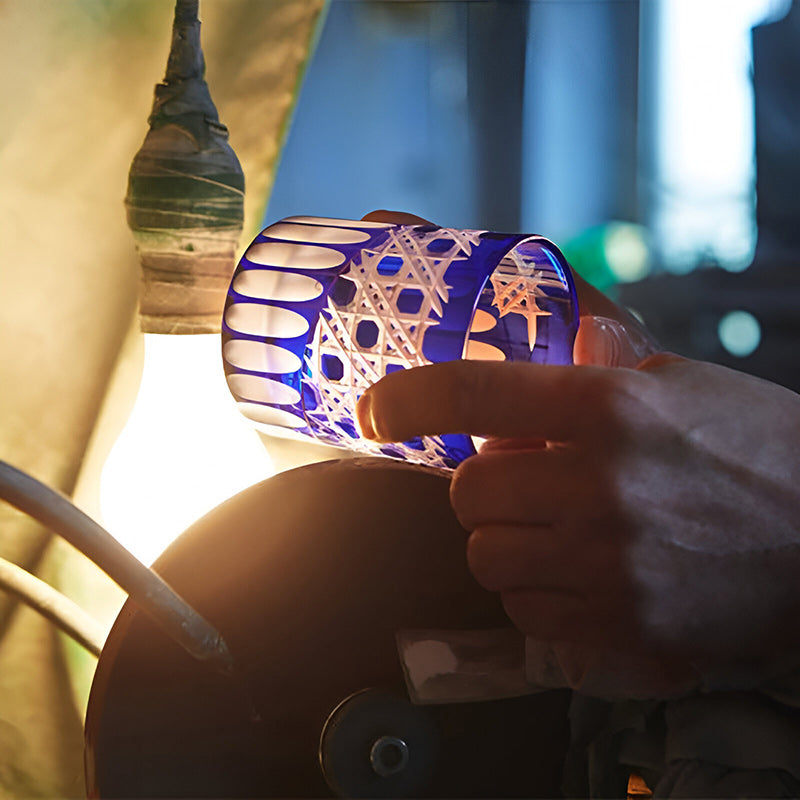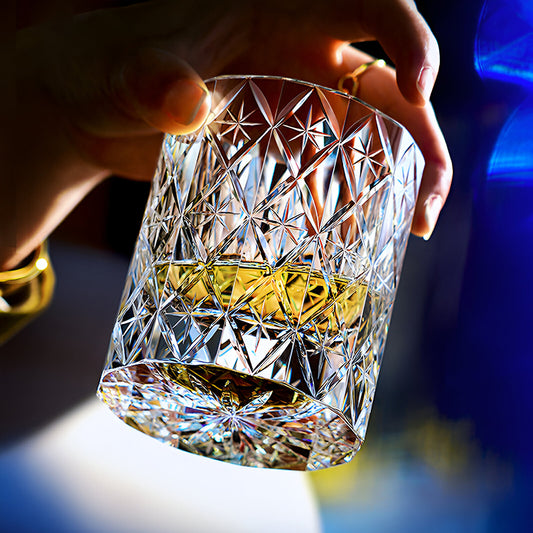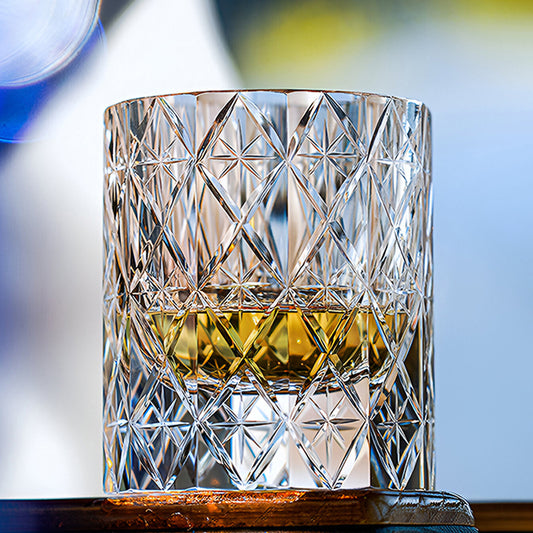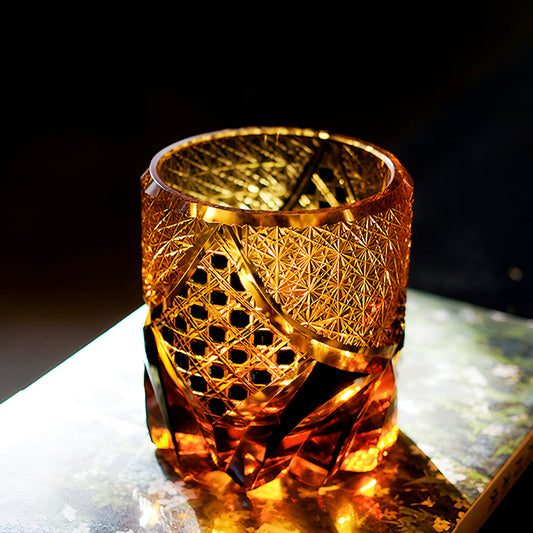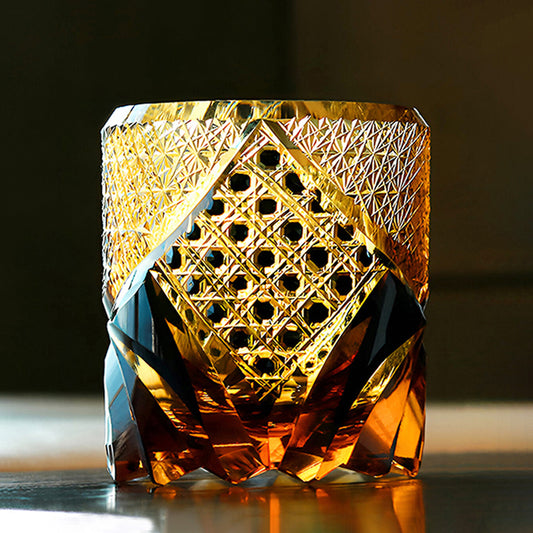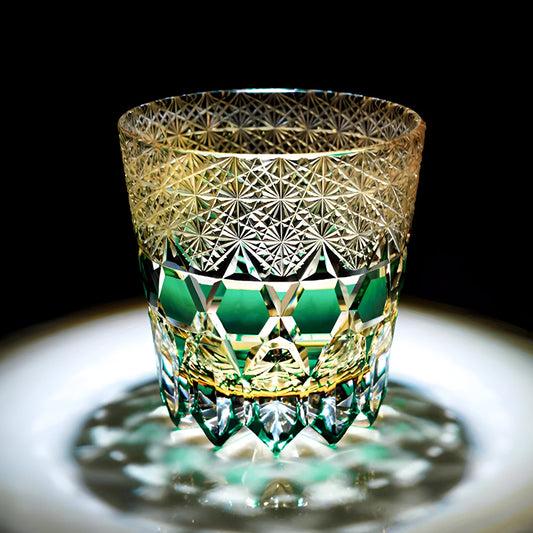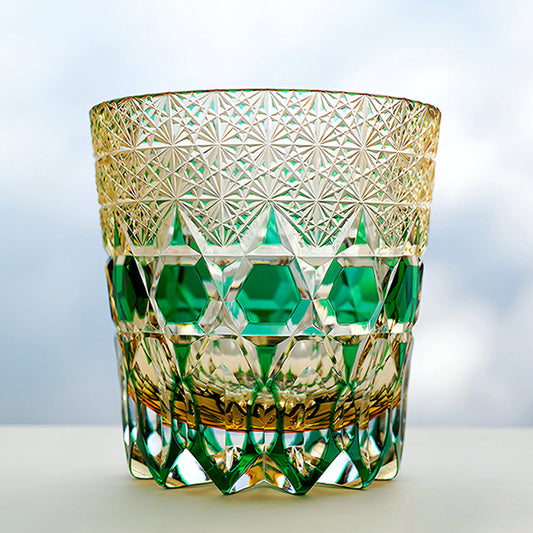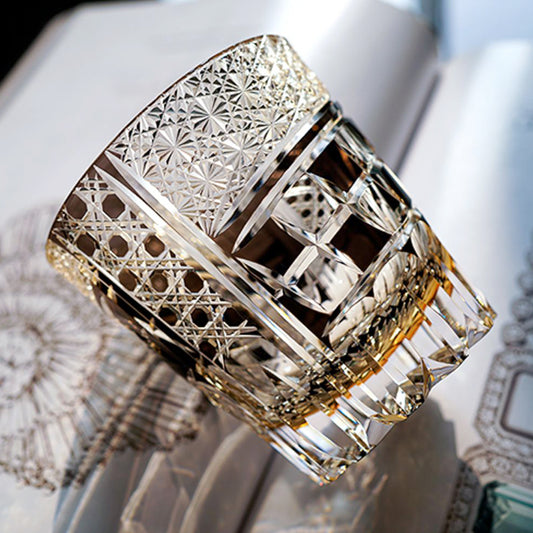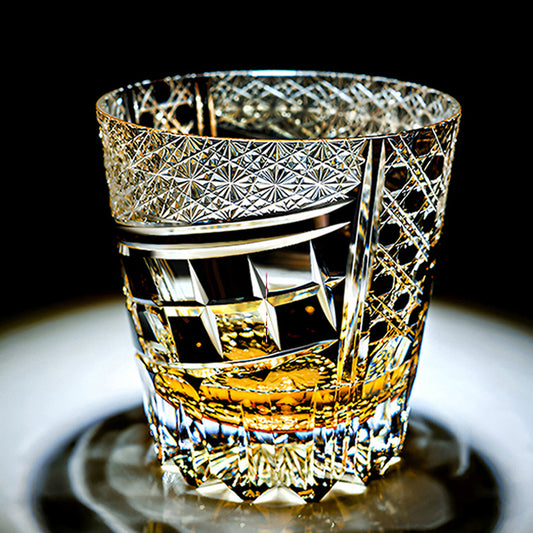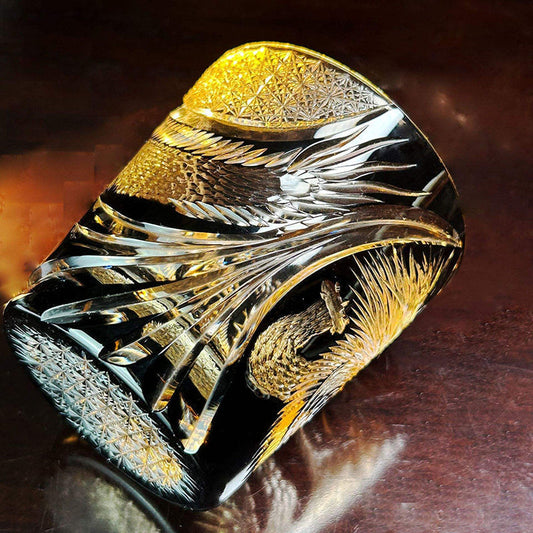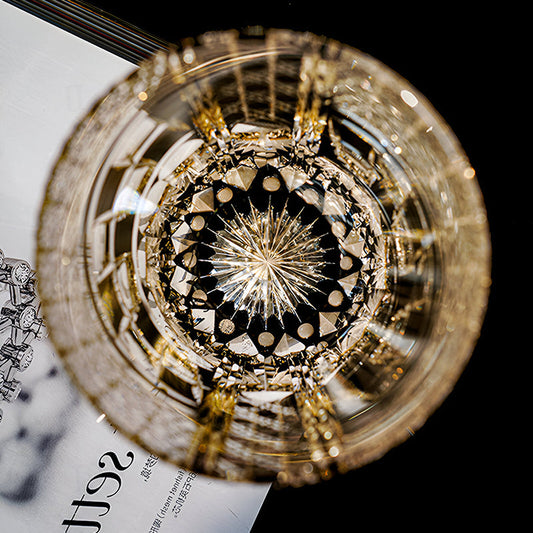In the early hours of the morning in Arakawa, 73-year-old Master Morishita is immersed in dim lighting, diligently using his ancestral "cat's eye blade" to carve a whisky glass. With each delicate touch of the blade against glass, a sound akin to ice cracking resonates, evoking a symphony of time that stirs his deep-rooted passion for traditional craftsmanship. This sound symbolizes more than just skill; it represents a silent dialogue between Master Morishita and his material, with every incision embodying his relentless pursuit of perfection. His gaze is focused and serene, as if the entire world converges upon this whisky glass, while his hands, seemingly endowed with a mysterious power, deftly and steadily manipulate the blade.
Master Morishita invites me to touch the bronze bell beneath the workbench. Each time a thousand perfect cuts are completed, craftsmen ring the bell, a simple ritual conveying their dedication and perseverance. The bell, now etched with the marks of time, resonates with each crisp strike, a commendation of the artisans' spirit. This bell is not merely a tool; it is a witness, chronicling Master Morishita's countless days and nights of diligent effort. Each chime serves as a reminder that true artistry demands the patience of time and the repetition of countless endeavors.

Through a tenfold magnifying glass, we catch a glimpse of the astonishing details hidden in the "disordered chrysanthemum pattern" at the base of the glass: each petal tip conceals minuscule star-shaped engravings measuring as small as 0.03 millimeters, showcasing the artisan's skill. Although these engravings are tiny, they pulsate with vitality, as if each petal breathes. Master Morishita explains that these details are not meant to be instantly visible, but rather discovered inadvertently by the user, eliciting a sense of hidden beauty. This beauty is not ostentatious but understated, requiring a heart attuned to appreciate it.
The triple chrysanthemum pistils employ a special carving technique, revealing their mysterious beauty only under specific conditions. This technique demands not only extraordinary skill but also a profound understanding of the material. Master Morishita reveals that it took him an entire year to master the essence of this technique. Each carving requires his undivided attention, as any slight oversight could undo all previous efforts. This relentless pursuit of detail epitomizes the artisan spirit.

The anti-slip patterns along the rim of the glass turn out to be an encrypted map, showcasing the ingenuity of the craftsmen. Master Morishita explains that this design serves not only aesthetic purposes but also aims to provide users with a unique tactile experience when holding the glass. This tactile sensation enhances the practicality of the glass and allows users to feel the artisan's dedication with each lift.
As the 28-year-old Yamazaki whisky is poured into the glass, the amber liquid seems to awaken an optical magic within the glass walls. The static patterns appear to come alive, projecting a galaxy-like scene on the ceiling under the influence of the sherry cask aroma. This wondrous transformation prompts awe, as if transported to another dimension, experiencing mystery and allure. This effect is no coincidence but the result of numerous trials and adjustments by Master Morishita. He tells me that achieving this effect necessitates precise carving angles and lighting conditions, where any deviation could alter the final outcome.

This whisky glass is not merely an object but a culmination of the artisans' dedication and wisdom. Behind these details lie the craftsmanship and artistry of the artisans, evoking their love and focus on craftsmanship. This spirit is not exclusive to the artisans but resonates with anyone who gazes upon this creation, evoking admiration and praise for the artisan spirit. Master Morishita confides that his endurance over the years stems from his steadfast belief that every piece is deserving of meticulous attention.


